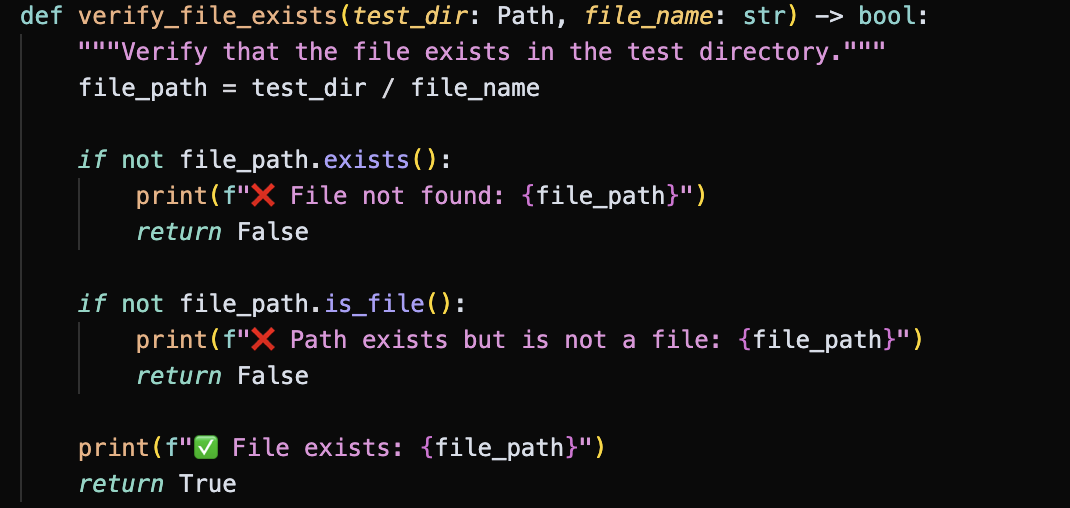Task
The tasks in MCPMark follows two major principles
- The tasks are based on realistic digital environments that are also used by human programmers.
- The task outcome can be robustly verified in python scripts.
Therefore, each MCPMark task consists of three files
meta.jsondescription.mdverify.py
Here, metadata.json includes the meta information of the task, description.md describes the purpose and setting of the task, as well as the instruction to complete the task. verify.py checks whether the task is completed successfully.
For example, you can ask the model agent to create a file with specific name and write specific content to the file, which belongs to the category of operating the file context. The structure looks like
Note that all tasks are placed under tasks/. filesystem refers to the environment for the MCP service.
meta.json includes the meta information about the task, including the following key
- task_id: the id of the task.
- task_name: full name of the task.
- description: task description.
- category_id: the id of task category.
- category_name: the full name of task categeory.
- author: the author of the task.
- difficulty: the task difficulty level.
- created_at: the timestamp of task creation.
- tags: a list of tags that describe the task.
- mcp: a list of MCP services it belongs to.
- metadata: other meta information.
Here category_name describes the shared feature or the environment across different tasks (e.g. the github repository or notion page the task is built on). In this running example, category_name refers to file_context.
description.md could include the following information
- Task name
- Create and Write File.
- Task description
- Use the filesystem MCP tools to create a new file and write content to it.
- Task Objectives
- Create a new file named
hello_world.txtin the test directory. - Write the following content to the file:
Hello, World - Verify the file was created successfully
- Create a new file named
- Verification Criteria
- File
hello_world.txtexists in the test directory - File contains the expected content structure
- File includes "Hello, World!" on the first line
- File
- Tips
- Use the
write_filetool to create and write content to the file - The test directory path will be provided in the task context
- Use the
The entire content of description.md will be read by the model agent for completing the task.
Accordingly, the verify.py contains the following functionalities


